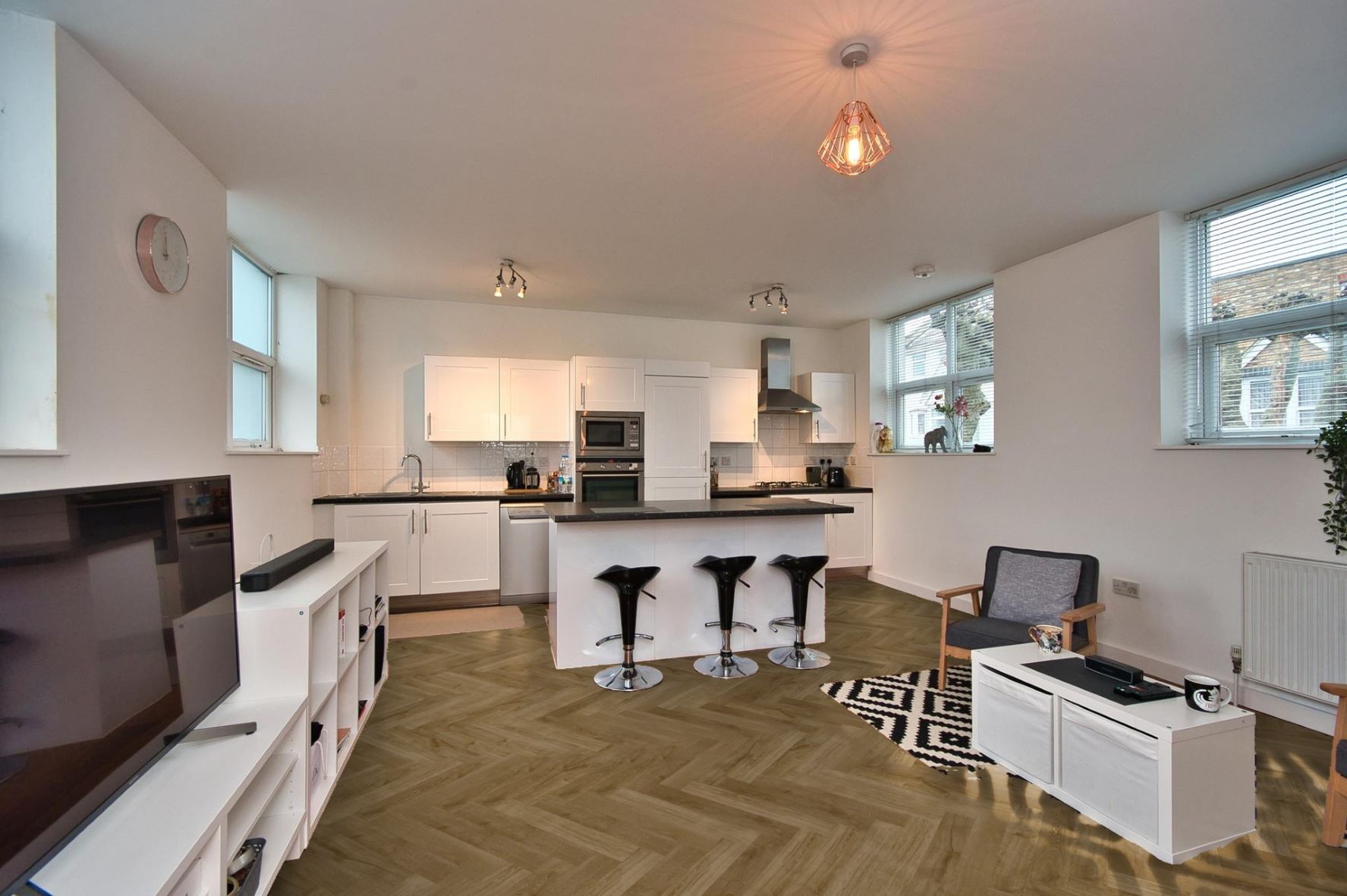The origin of the herringbone pattern started with the Roman Empire, which used it to make roads. Later the French used the herringbone pattern in salons. It became popular among the wealthy, who used the design with wood flooring.
Today we associate the herringbone pattern with luxury and opulence. Herringbone floors transform the look of any room. You can combine it with French contemporary, industrial, and modern farm décor to create a stunning look in any room.
LVT is quite tricky to install in the herringbone pattern but it’s not impossible for those who like to do DIY as most come with click lock systems which make them easier. However, LVT in the herringbone pattern is beautiful and is long lasting.
How to Choose Luxury Vinyl Tile
Luxury Vinyl Tile comes in two options, click lock and glue-down.
Click LVT Flooring
Click LVT flooring is the easiest for a DIYer to install. The flooring floats above existing flooring and does not need to be glued down. Most LVT comes with an underlay which is required for installing these. The underlay lays on the subfloor to create a flat, smooth surface for the flooring to sit on. The underlay also acts as a moisture barrier, absorbs sound, and insulates the floor. LVT with a backing made of cork or foam does not require an underlay.
While click LVT flooring is more expensive than glue-down flooring, it is less costly to fit than its glue-down counterpart. Your existing flooring will not be an issue. You can install the click flooring right over it with very little prep!
Glue-down LVT Flooring
Glue-down flooring needs no underlay. However, it does require the subfloor to be smooth and flat. So you may have to do some floor preparation before laying the glue-down floor to ensure it will lay flat and look smooth. You can create borders to accompany your herringbone pattern using glue-down flooring, which gives the floor a classic look. If you’re looking for a grouted floor look, feature strips are available to create the grout look you want. Glue-down flooring is the more costly installation of the LVT options.
Advantages of LVT Flooring
Luxury Vinyl Tiles
Four layers make an LVT tile. While all the layers are essential, the layer most buyers are concerned with is the wear layer. The wear layer is a urethane-based topcoat that keeps the floor shiny and endures the wear and tear of everyday use. A thick wear layer assures the floor’s longevity and is resilient against water, spills, and heavy footfall. Luxury vinyl tiles are the perfect flooring choice if you have underfloor heating.
Durability is one of LVT’s key features . Durability is why most homeowners choose LVT for their flooring. Luxury vinyl tiling is ideal for allergy sufferers because it has natural antistatic properties. Maintaining the flooring is as easy as a broom or vacuum and a wet mop. When you decide to replace the floor, it is easy to remove. Replacing the glue-down version requires more work than click LVT. The best part of LVT is that it will last 20-plus years if you take good care of it!
Why Choose Herringbone?
Besides being a stunning addition to a room, the herringbone pattern brings your eye to the edge of the room, making a narrower room look wider. It gives a smaller space the illusion of being larger. Herringbone is a classic look giving the room a look of luxury. Using LVT herringbone pattern means you can choose from more colour and designs such as stone or wood.
How to Create the Herringbone Pattern
The glue-down LVT is more difficult to install. If this is your first flooring experience or you are short on patience, professional installation may be a better option for you. DIYers will have no issues laying the herringbone pattern. It just may take a little longer!
Click LVT was created with DIYers in mind. Click tiles come individually or in a kit that has everything you may need to install them.
All click luxury vinyl tiling for the herringbone pattern has a click-lock system on each side of the tile. These boards are labelled A and B to create the “V” pattern of the herringbone design. Then, starting with the header joint (shorter side of the board), you click it into the longer side of the board at an angle. Most people find it helpful to draw a layout before starting, so they have a reference. Some manufacturers provide this in their kits.
The pattern is started in the center of the room and created outward. From there, you keep adding the boards to the design you started. Once your floors are complete, they will be the focal point in the room.
Some Helpful Tips
Before you run out and buy the flooring, look at the room. If the room temperature fluctuates with the season, such as in a greenhouse or sunporch, glue down LVT is the best choice for that room because as the temperature fluctuates, the floor will not settle and resettle with the colder temperatures.
If you install over a subfloor, you will need to prepare it first. First, vacuum the floor several times to remove any dirt. Then check the subfloor for deep scratches and dents. You will need to patch these with a flooring patcher and let them dry.
After it is dry, sand the patched areas and vacuum the floor. After vacuuming, damp mop the floor to remove small particles and ensure the surface is free of sanding debris. Once done, you are ready to install the underlay if needed.
If your room has lots of foot traffic, like the kitchen, hallway, or bathroom, using glue-down LVT will be less likely to move. Whether you choose click or glue-down LVT, the flooring will need to be inside for 24 hours (climatized) before you can install it.
To find out more please call 020 3697 6812 , or email info@onestepbeyondflooring.co.uk.




